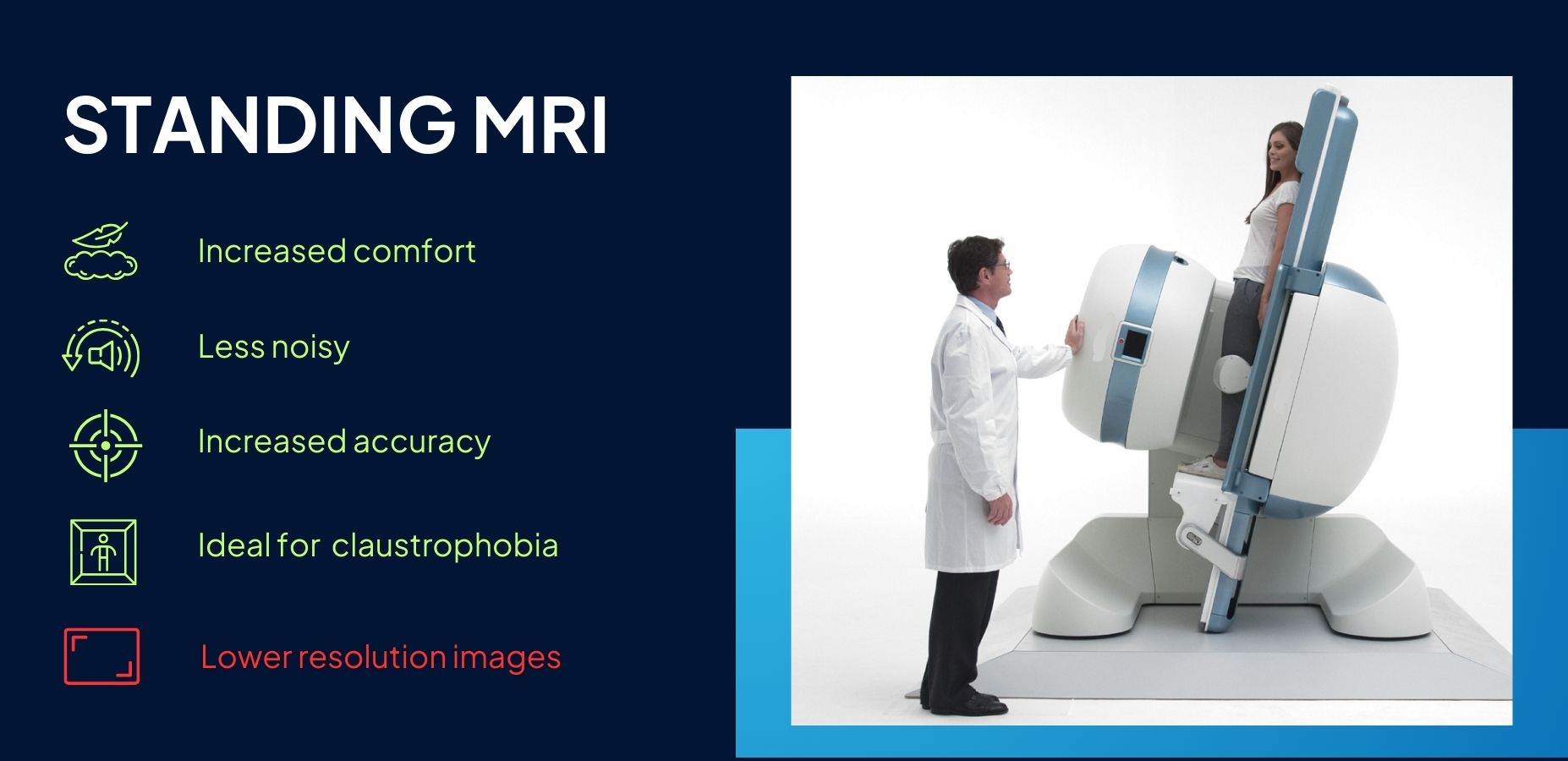Written by Dr. Sachin Shah
I’m a leading radiologist in the United Kingdom. I have thirty years of experience. I have seen firsthand the amazing evolution of MRI technology. These advances have improved our ability to diagnose many conditions.
They do so with more comfort and precision. I’ll explore open, upright, and standing MRI machines. I will discuss how each caters to different patient needs and clinical scenarios.
Overview of Standing MRI Machines

Standing MRI machines are like upright MRIs. But, they make standing patients scan.
Advantages of standing MRI machines
- Functional position imaging ─ It’s essential for diagnosing conditions affected by weight-bearing.
- Suitable for patients who cannot lie down. It provides an option for those who struggle to lie flat due to pain or other medical conditions.
Limitations of standing MRI machines
- Limited by patient stability ─ patients must be able to stand still for the duration of the scan.
- The images may not be as good as those from high-field traditional MRIs.
Overview of Upright MRI Machines

Upright MRI machines enable the scanning of patients in various positions. They can be sitting or standing. This ability can be crucial for certain types of diagnoses.
Advantages of upright MRI machines
- There are many Magnetic Resonance Imaging positions. They allow for imaging in the body’s natural position of use or in pain.
- This increase in comfort is helpful. Patients can sit or stand. This helps those who feel pain while lying down.
- Quieter than conventional MRIs ─ They’re designed to operate more.
- They’re more accurate and reliable. They are ideal for spinal and joint conditions. This is because they allow for scans while bearing weight.
Limitations of upright MRI machines
- Scanning can take longer ─ positioning and setup may also add to its time.
- The magnetic field strength can vary. This change may affect image clarity.
Overview of Open MRI Machines

Open MRI machines represent a significant shift from the claustrophobic traditional tube design. Designers created these machines to be more. They’ve got a spacious design that doesn’t enclose the patient.
Advantages of open MRI machines
- Open MRIs make less noise than traditional MRIs. They provide a more relaxed environment.
- The less intimidating design is easier for children to tolerate.
- Accommodate a wide range of patients. They’re ideal for larger patients or those with mobility issues.
- Creates room for support during a scan. It’s a family that can stay close and comfortable.
- It reduces the need for sedation for claustrophobic patients. The open aspect can reduce anxiety without sedatives.
- Better imaging for certain illnesses ─ It’s particularly useful for musculoskeletal scans. In these, positioning can be crucial.
Limitations of open MRI machines
- Scan may take longer ─ Due to their design, open MRIs can take longer to get images.
- Lower-resolution images have lower magnetic field strengths. This can affect image quality.
- Limited applications ─ It’s not suitable for all types of diagnostic imaging.
Open vs Upright vs Standing MRI Machines ─ Which is Better?

The choice depends on the patient’s needs. They can pick open, upright, or standing MRI machines. It is determined by the medical condition and the body part being examined.
Each type offers unique advantages that can be pivotal in certain clinical contexts.
Conclusion ─ Choose the Right MRI Machine for It’s Next Scan
Choosing the right MRI machine means understanding the patient’s abilities. You also need to know the needed diagnostics. It also means grasping the trade-offs between comfort, image quality, and scan duration.
As medical professionals, our goal is to match each patient with the best MRI for their needs. This ensures accurate diagnoses and maximizes comfort.

